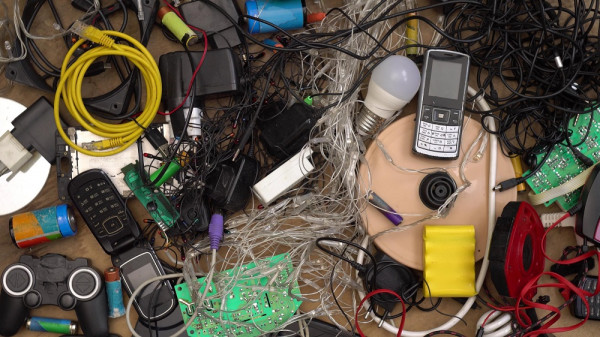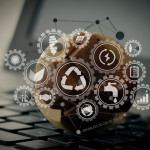
The plastic trash problem receives a lot of attention, and with good reason: by 2040, there may be 7.7 gigatons of the stuff clogging landfills, rivers, and seas, or being burned. Plastic isn’t the world’s fastest-growing trash source, which is equally astounding.
Electronic Devices Are The Top Source
According to research published by the International Telecommunications Union over the last 18 months, that honor goes to a variety of electronic devices, ranging from mobile phones to appliances like vacuum cleaners (which make up the majority of today’s e-waste stream) to refrigerators, air conditioners, and other heat-exchange systems (the fastest growing part of the e-waste universe).
Each year, about 50 million tons of electronic and electrical trash (e-waste) are created, comparable in weight to all commercial airplanes ever constructed; only 20% gets formally recycled, according to the authors of a World Economic Forum research study released in 2019. If nothing is done, according to them, trash will more than quadruple to 120 million tons per year by 2050.
Consider two further data points:
- Only 17.4 percent of gadgets are collected, repaired, or recycled globally, according to researchers. (By comparison, the US Environmental Protection Agency stated that PET bottles and jars were recycled at a rate of over 30% in 2019.)
- The projected worth of this e-waste — including the materials that might be collected and reused, as well as the income that could be made by finding them a new home — is $57 billion, which is more than some nations’ GDP.
These realizations, combined with revelations about the fragility of the electronics supply chain made public during the COVID-19 pandemic and concerns about future shortages of materials like glass, copper, gold, and aluminum, have sparked a flurry of activity in the electronics circular economy this year. The ability to remove these materials from landfills and to extend the asset life of goods or specific components inside them has a vast market.
Glass, plastic, cobalt, nickel, aluminum, copper, gold, silver, lead, and palladium are among the materials extracted from some of these devices. Others are being renovated in preparation for selling. Best Buy, Target, and Amazon are among ERI’s notable customers (it conducts collecting efforts for the stores, among other things), as well as “every OEM you can think of,” as well as New York City, Los Angeles, and 500 other cities around the United States.
Recovering Materials Leads to New Business Models
The economic need for creating more complex techniques for recovering materials from electronics is significant. Many metals and other chemicals important for expediting the transition to clean energy, such as nickel, cobalt, lithium, and rare earth metals, may be recovered from these systems.
The International Energy Agency predicts a surge in demand for these materials: For example, the energy industry will account for over 90% of lithium demand and up to 70% of nickel and cobalt consumption in the next two decades. A significant increase in recycling is needed because only around 1% of these materials are recovered now.
To maintain the things we have in place longer, the most effective method to use resources is to retain them in that same usage for a long period. Interest in reconditioned items is rising. A rising number of firms, particularly those offering business-to-business products, are developing sales strategies that rethink capital equipment ownership, such as medical diagnostics systems or digital printers. These rental or pay-per-use agreements allow customers to utilize an item for a certain amount of time, with the manufacturer collecting and processing the equipment for its next best use at the end of the period.
As the e-waste issue becomes a more pressing concern for businesses and communities enterprises should pay special attention to where electronic gadgets and other digital equipment will end up once an organization has outgrown them. The industry has to unite behind uniform vocabulary that defines the many alternatives and procedures available so that both producers and customers have a greater grasp of expectations in order to progress toward a more circular economy for electronics. This is also true of the way reconditioned products are described, with the goal being to ensure that resources are handled with the highest level of value possible.
Related News: Recycling Nanowires is Now Possible | ‘Resilient Supply Chains’ Associated With E-Scrap
TechWaste Recycling directly services all of Southern California and provides pickup services to its facilities from nationwide locations. Visit TechWaste Recycling’s website at www.techwasterecycling.com to schedule a pickup that works for your convenience and schedule.


































